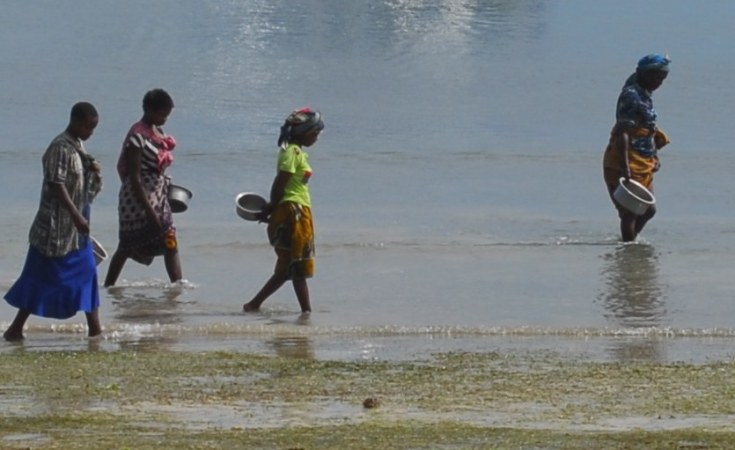Do 90% eat 3 meals day? Yes just after harvest. But 7 months post-harvest 90% won't eat 3 meals.
In Mozambique, "90% of the population is food secure, that is, they already manage to have three meals a day", Agriculture Minister Celso Correia told the Director-General of FAO in Rome on 1 March. Correia added: "This is a great success for Mozambicans." (O Pais 2 March)
The statement caused such an outcry in Maputo that Correia was forced into a very public 15 March launch of the "2022 Post-harvest food security report" by the Food and Nutritional Security Technical Secretariat (SETSAN - Secretariado Tecnico de Segurança Alimentar e Nutricional), which raises serious questions about the claim.
The new report says "about 90% of the Mozambican population had an acceptable diet to meet their daily energy requirements in the post-harvest period," and gave this data:
Is "adequate minimum food consumption" equivalent to three meals a day in the post-harvest period?
But the SETSAN study includes an equally important chart of maize reserves after harvest:
The chart shows what portion of those surveyed in each province had maize reserves. For Nampula, it shows (in blue) 56% with no reserves, 6% (orange) less than one month, 28% (grey) 1-3 months, etc. The big blue bottom section of "no reserves" dominates the chart, and is so dramatic it says something different than three meals a day. (For black and white readers the full chart in colour is in https://bit.ly/Moz-Food-Sec-2022 )
Excluding Maputo city, where an urban population is more dependent on the market, and Niassa which has good food stocks, half of Mozambicans have no maize reserves and 80% of the population will have no maize stock after three months.
So, yes, it might be argued that post-harvest 90% of people eat three meals a day. But the data also show that after 7 months, 90% will not have enough food to eat three meals a day.
Personal view
Ground truthing and Potemkin villages
For those of us who use data regularly, "ground truthing" becomes essential. Do we interpret the numbers correctly to represent what is actually happening on the ground? The concept was first used by the military to ensure that what they thought they "saw" in aerial photographs was actually what was on the ground. It becomes equally important with surveys and other data.
Before I report on numbers, I always wait to see the actual data, and I delayed reporting on the Celso Correia statement until the SETSAN report was available. My first two questions always are, what does the data say about what is happening on the ground, and does it "feel" right? "Feel" right depends on ground truthing, which can be very hard for ministers, ambassadors and visiting dignitaries.
It is impossible for senior people to see the ground truth as they are whisked around pre-planned tours. When writing Do bicycles equal development in Mozambique? (2008) we were sent by the Ribaue district administrator to the model association Associaçao de Ehiquite-Iapala which had become a donor tourist attraction because of fish farming promoted by the NGO CARE. Members made a standard presentation, with a flip chart, about how onions and fish were helping them to "overcome absolute poverty". At this point, donors and ministers normally left, but we stayed and talked, and a different reality emerged. One woman said that the donors and government officials kept coming, but "we are still poor; there is no improvement." They produced onions but no one bought them. Finally, after more than an hour of chat, they admitted they had not sold any fish. They had no net to catch the fish, there was no market, and in central Nampula province there was no experience of eating fresh fish. We went on to talk to CARE in Nampula city and were told bluntly: CARE gives fish, but "we are not in the business of providing nets". Eight years later, when writing Chickens and Beer (2014), we went back. The association had realised that performing for visiting government officials, NGOs, and donors, had brought them only empty promises. But on their own they were selling fish and onions. Ground truthing and going back is all too rare.
The problem of shows for visiting dignitaries is not new. The term "Potemkin villages" comes from story of Grigory Potemkin, former lover of Empress Catherine II, who impressed the Empress in 1787 during her trip up the Dnieper River (now in Ukraine) with a fake portable village. As soon as the barge carrying the Empress and ambassadors passed, the village was disassembled, then rebuilt upstream overnight. Ministerial and ambassadorial trips in Mozambique too often see a local version of Potemkin villages, as in Ribaue.
The final problem is that Mozambicans have been made increasingly fearful of speaking truth to power, so during an official visit they parrot the line given them by local officials who are often there to police the meeting. And the visitors rarely have time to analyse the data themselves or spend hours talking to local people. So they accept the Potemkin villages of brief power points explaining the data, rehearsed local presentations, and local officials painting a glowing picture of what they are supposed to be seeing.


